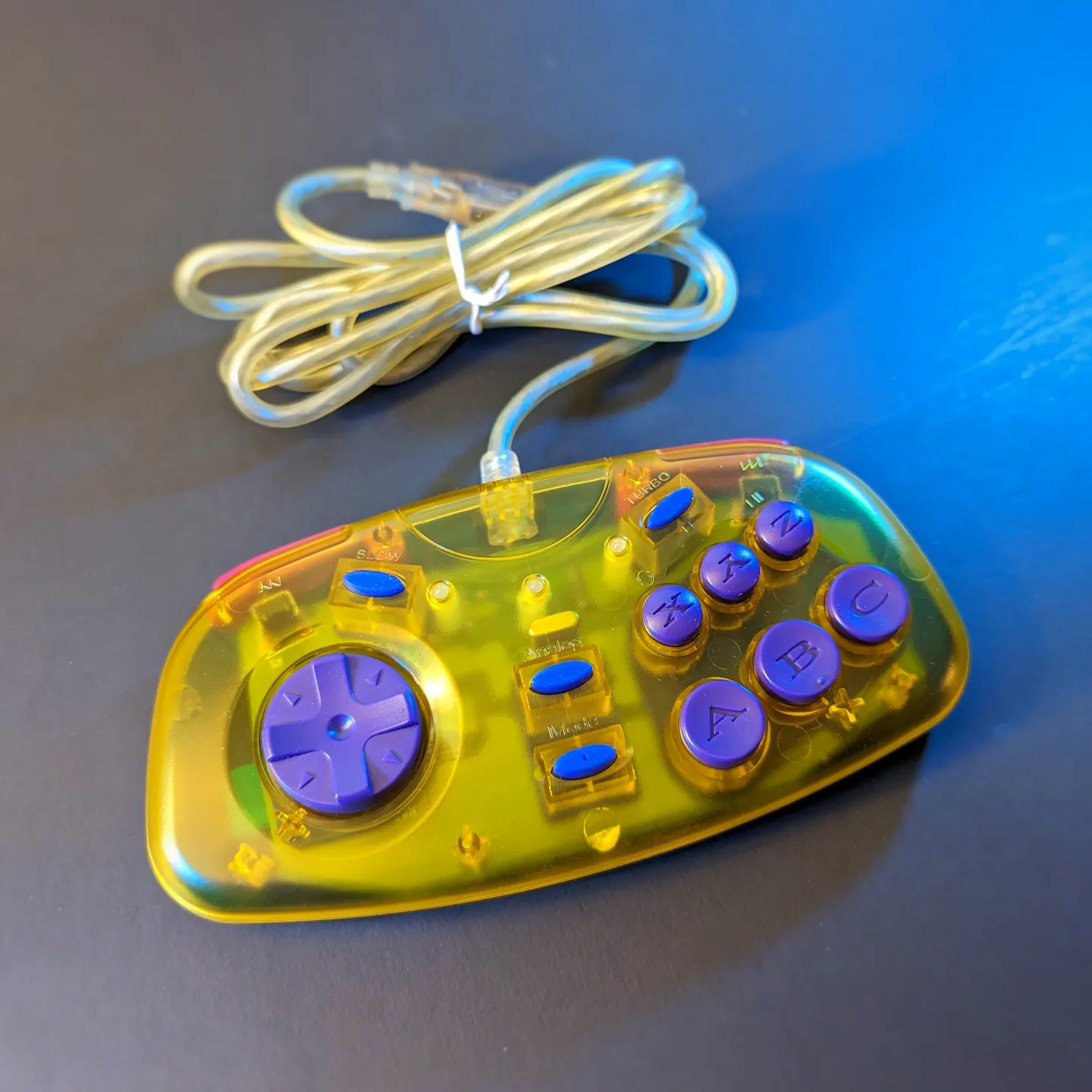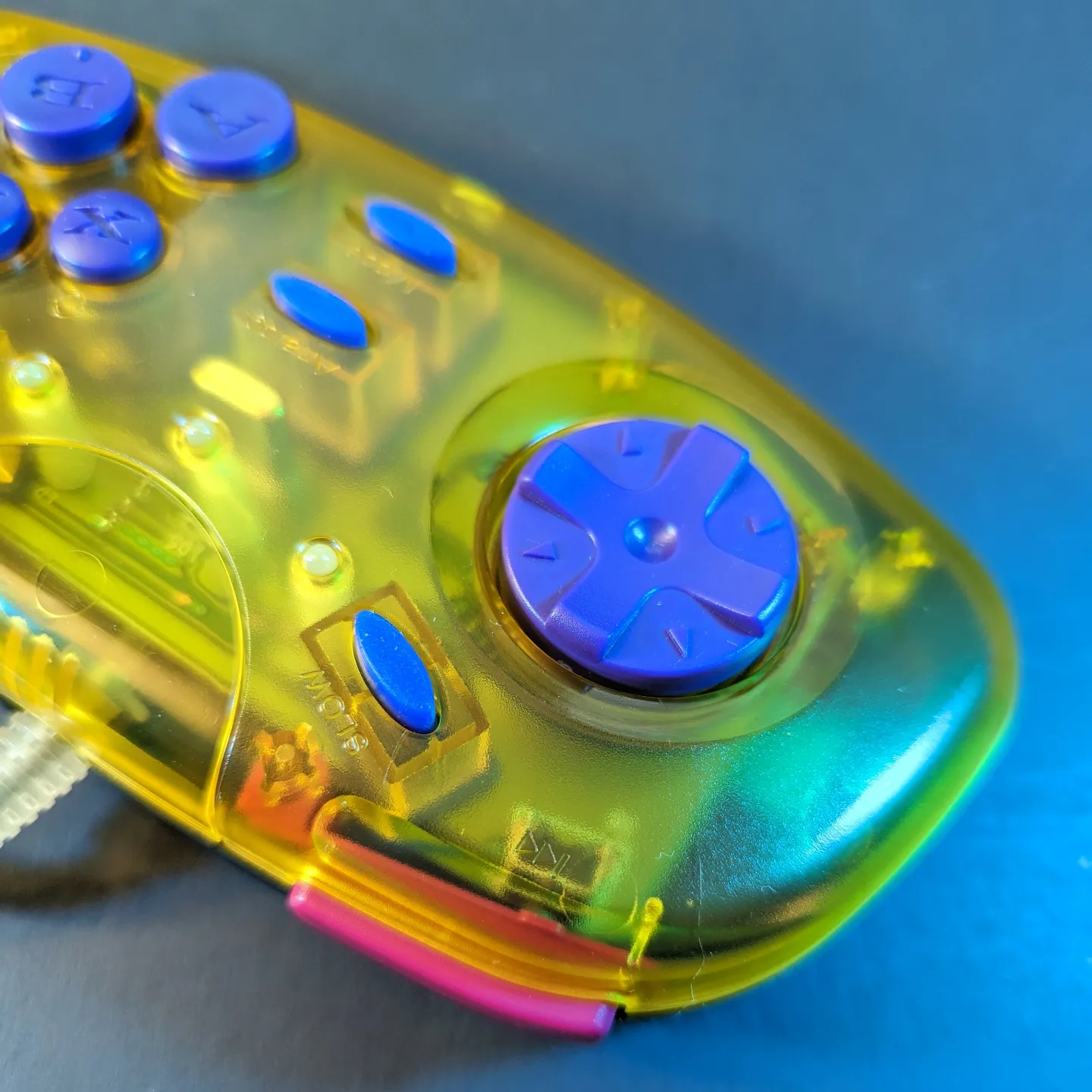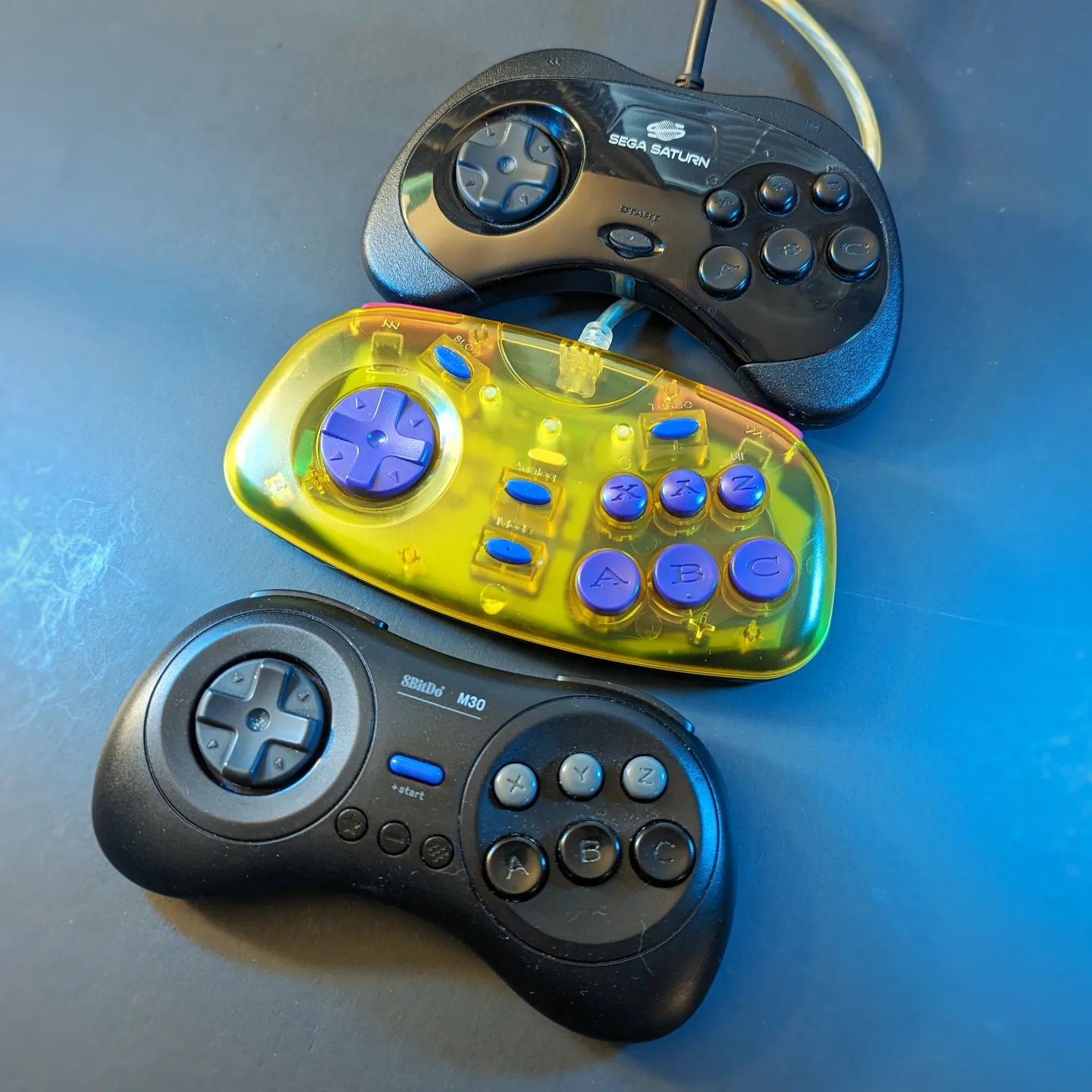The ‘Joymouse’ bundled with Deep Raider is truly wild, and still functional, after 23 years
I first came across the soundtrack to Deep Raider a few weeks ago and had it on loop for a day or two. Underwater adventures are usually accompanied by a subtle or subdued soundscape and Deep Raider didn’t disappoint. But the more I listened, the more I wondered: what even is Deep Raider? I’d never heard of the game before so I had to start digging and I didn’t find much. A single YouTube upload shows the game’s CG intro while Archive.org captures of its related homepages are mostly lost behind dead Flash content.
Largely sight-unseen at this point, it looks to be a 3D third-person shooter set in various underwater environments where reluctant protagonist (and animal psychic), Jennifer Connors, fights to both save the critters and to stop global annihilation. Released exclusively in North America in 2000, it was apparently the only title from both developer Cyberscape Graphics and publisher InfoBank. And as you might have guessed by its obscurity, it doesn’t seem to have landed on anyone’s radar back in the day. A one-off PC release in the early 2000s isn’t that noteworthy but then I took my first glance at the game’s retail box and I pretty much knew I was going to pick this up.
Most of the box is typical of the era with flat-shaded CG renderings and screenshots distorted by a fisheye lens effect. How were these tiny bubbles supposed to convince anyone to buy this? Anyways, the other half of the box — both front and back — touts the features of its wild “BONUS!!”, a USB Joymouse.
First and foremost, this controller is clearly cut from the same cloth as the Control Pad for the Sega Saturn. The layout, the font on the buttons, the D-Pad, and even the unnecessary media playback icons are straight from the same molds that Sega struck in the mid-90s. Cyberscape’s version here includes a couple of LEDs to identify its various functions, buttons for “Turbo” and “Slow” which don’t do what you’d expect them to, and a vaguely soap bar-shaped design that ditches the comfortable curves of Sega’s pad.
As the name implies, the Joymouse controller also functions as a computer mouse but it isn’t as exciting as I was hoping. With little info to go on I could only daydream that it had an optical laser on the backside and they expected you to slide the controller around in your palm. It would’ve been gloriously dumb. The other feature that got my imagination racing was the claim of a “hand-free page roll button”.
In reality Windows still identifies it as a Joymouse and with the touch of the Mode button the D-Pad starts controlling the mouse cursor. The A, B, and C buttons then perform Left, Middle, and Right clicks and the Turbo and Slow buttons change the cursor speed, although it still doesn’t move quite as fast as you’d like. The shoulder buttons tweak the cursor speed if you need just a second of slower or faster movement, and if you hold them both the cursor zips around at a much more reasonable pace.
As for that hand-free page roll, it just means that when you middle-click with the B button you get the same mouse-controlled page scrolling that you get with most any mouse to this day. It’s handy for this controller that lacks any other means to scroll the page but it’s definitely not creative or exciting.
Despite being a surprisingly full featured mouse, I don’t think anyone could ever prefer this over the traditional fidelity of just any regular ol’ mouse. I suppose there might be some games out there where toggling between mouse controls and D-Pad style controls on the same device might come in handy but I sure can’t think of any examples. In fact, Deep Raider itself might be one of those games but I still haven’t been able to load it up as of this writing. So my next best bet was to try this thing in RetroArch.
Since Windows identified it literally out of the box RetroArch also had no problems finding and addressing each of its buttons. However, with its atypical buttons for mouse controls you lose what was originally the Saturn Control Pad’s ‘Start’ button. Windows only sees the D-Pad, the six face buttons, and the two shoulder buttons. Assigning Start and Select functions in RetroArch then gets a little weird as you have to move them to a face or shoulder button and lose those buttons for their intended in-game purposes.
It shouldn’t be an issue with most older consoles but it ironically makes Saturn emulation problematic; you’d have to rely on a keyboard button to press ‘Start’ at that point. Those caveats aside, the controller works just fine and still feels pretty good in the hand even 23 years later. I can’t say how well it would hold up to hundreds of hours of use but it doesn’t feel cheaply made, thanks in no small part to cloning Sega’s designs.




Finally, the Joymouse has been explained for the internet! I love becoming the change that I want to see in this — small and very specific — world. Hopefully that was as interesting for you to read and watch as it was for me to pick apart and detail. And feel free to comment below or on the videos if you have even more specific questions.
Now for Deep Raider itself. Sadly, I haven’t had any luck getting it to run yet on Windows 10 or a Windows XP VM. Hopefully that follows soon but with work, the upcoming Winter holidays, and our trip to Japan we might not be getting wet with Deep Raider until some time in 2024.












